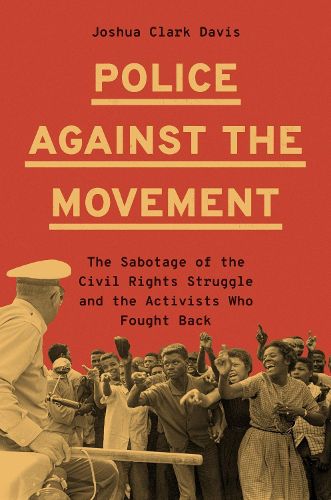Readings Newsletter
Become a Readings Member to make your shopping experience even easier.
Sign in or sign up for free!
You’re not far away from qualifying for FREE standard shipping within Australia
You’ve qualified for FREE standard shipping within Australia
The cart is loading…






A bold retelling of the 1960s civil rights struggle through its work against police violence-and a prehistory of both the Black Lives Matter and Blue Lives Matter movements that emerged half a century later
Police Against the Movement shatters one of the most pernicious myths about the 1960s: that the civil rights movement endured police violence without fighting it. Instead, as Joshua Clark Davis shows, activists from the Congress of Racial Equality and the Student Nonviolent Coordinating Committee confronted police abuses head-on, staging sit-ins at precinct stations, picketing outside department headquarters, and blocking traffic to bring attention to officer misdeeds. In return, organizers found themselves the targets of overwhelming political repression in the form of pervasive police surveillance, infiltration by undercover officers, and retaliatory prosecutions aimed at discrediting and derailing their movement.
The history of the civil rights era abounds with accounts of physical brutality by county sheriffs and tales of political intrigue and constitutional violations by FBI agents. Turning our attention to municipal officials in both the North and South, Davis reveals how local police bombarded civil rights organizers with an array of insidious weapons. More than just physical violence, these economic, legal, and reputational attacks were designed to project the illusion of color-blind law enforcement.
The civil rights struggle against police violence is largely overlooked today, the victim of a willful campaign by local law enforcement to erase their record of repression against the movement. By returning activism against police abuses to the center of the civil rights story, Police Against the Movement undoes decades of historical erasure surrounding the struggle against state violence that continues to this day.
$9.00 standard shipping within Australia
FREE standard shipping within Australia for orders over $100.00
Express & International shipping calculated at checkout
A bold retelling of the 1960s civil rights struggle through its work against police violence-and a prehistory of both the Black Lives Matter and Blue Lives Matter movements that emerged half a century later
Police Against the Movement shatters one of the most pernicious myths about the 1960s: that the civil rights movement endured police violence without fighting it. Instead, as Joshua Clark Davis shows, activists from the Congress of Racial Equality and the Student Nonviolent Coordinating Committee confronted police abuses head-on, staging sit-ins at precinct stations, picketing outside department headquarters, and blocking traffic to bring attention to officer misdeeds. In return, organizers found themselves the targets of overwhelming political repression in the form of pervasive police surveillance, infiltration by undercover officers, and retaliatory prosecutions aimed at discrediting and derailing their movement.
The history of the civil rights era abounds with accounts of physical brutality by county sheriffs and tales of political intrigue and constitutional violations by FBI agents. Turning our attention to municipal officials in both the North and South, Davis reveals how local police bombarded civil rights organizers with an array of insidious weapons. More than just physical violence, these economic, legal, and reputational attacks were designed to project the illusion of color-blind law enforcement.
The civil rights struggle against police violence is largely overlooked today, the victim of a willful campaign by local law enforcement to erase their record of repression against the movement. By returning activism against police abuses to the center of the civil rights story, Police Against the Movement undoes decades of historical erasure surrounding the struggle against state violence that continues to this day.